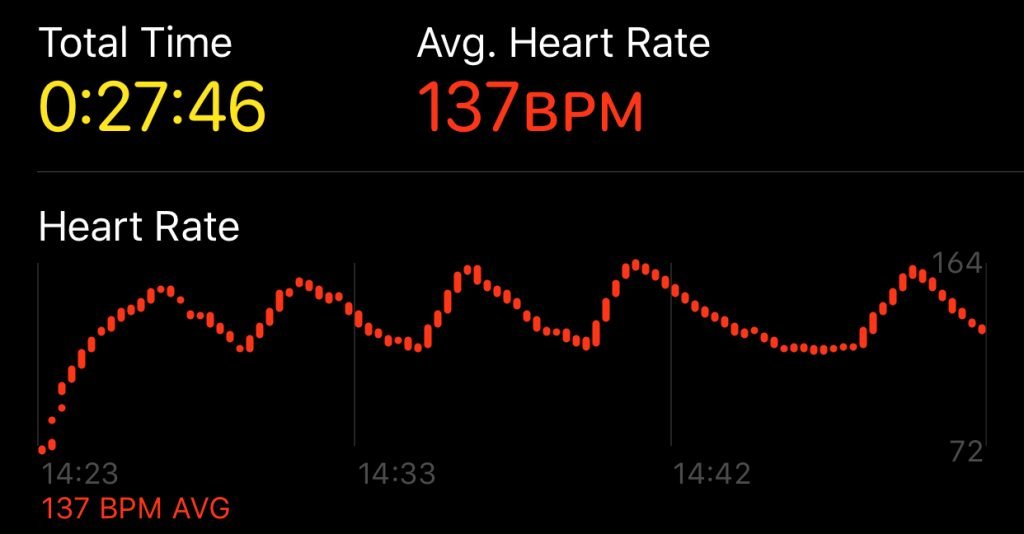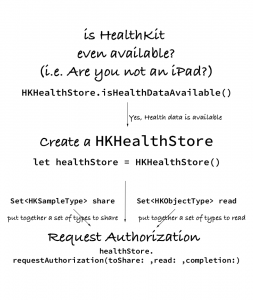
HealthKit - Getting Started - HKObjectType and Authorization
HealthKit is the most important API when it comes to building health, fitness and workout apps. HealthKit also has many intricacies and details which need introduction when getting started. The data structures encourage precision while having the flexibility to store a variety of values. The way it asks users give app access HealthKit will probably be similar with many iOS developers. HealthKit follows many patterns in other iOS APIs such as Core Location or Core Data. At the same time it uses newer programming techniques and newer technology.
Why I Am Building a Workout App
As an independent software developer, exercise is an important part of my schedule. It keeps me healthy, my mind active, and my body stimulated. In order to make the most of my time, I started looking into High-intensity interval training. High-intensity interval training has many benefits but the main strategy is to switch between breif periods of high levels and low levels for an extended period of time. For instance, I’ve started exercising on the stair stepper for 30 minutes. In that period of time, I’ll alternative the speed on the machine to get my heart rate to fluctuate between 150 and 125 beats per minute - for 15 - 30 seconds each. Right now I use the built-in Workout app on my Apple Watch and check my heart rate throughout my exercise. [caption id="attachment_33" align="alignnone" width="1024"] An example of one of my workouts. Notice how fluctuate my heart rate with the intensity of the workout.[/caption] However a custom app which could notify me of when I reach certain heart rates for a period of time would be better. As an Apple Watch owner, who has built his fair share of apps for the Apple Watch since day one, this presents itself as a great opportunity to learn more about HealthKit.
An example of one of my workouts. Notice how fluctuate my heart rate with the intensity of the workout.[/caption] However a custom app which could notify me of when I reach certain heart rates for a period of time would be better. As an Apple Watch owner, who has built his fair share of apps for the Apple Watch since day one, this presents itself as a great opportunity to learn more about HealthKit.
HealthKit Structure - QuantityTypes and WorkoutTypes
One of the key classes in HealthKit is HKObjectType. HKObjectType is the base class which defines different data types. For instance in the case of heart rate, will be a HKQuantitiyType . To access specific types, call
HKQuantity.quantityType(forIdentifier: HKQuantityTypeIdentifier) with the correct HKQuantityTypeIdentifier . For instance to get the heart rate HKQuantityType:
HKObjectType.quantityType(forIdentifier: .heartRate)Another
HKObjectType is HKWorkoutType, which is accessed by calling
HKObjectType.workoutType(). [caption id="attachment_41" align="aligncenter" width="800"] HKObjectType Hierarchy[/caption] The first thing we are going to use with these types is request permission from the user to read and write to HealthKit.
HKObjectType Hierarchy[/caption] The first thing we are going to use with these types is request permission from the user to read and write to HealthKit.
Requesting Authorization in HealthKit
One thing Apple tries to do their best at is making sure the user gives permission to various APIs. Just as with location info and notifications, the user must allow an app permission in order to access HealthKit. The first thing which needs to be done, is to check if HealthKit is available by calling
HKHealthStore.isHealthDataAvailable(). If HealthKit is unavailable (such as on the IPad), deliver a notice to the user. Next get access to HealthKit via the class, HKHealthStore. Call HKHealthStore() to instantiate an object to use throughout your app. With the
HKHealthStore object, request authorization through the
.requestAuthoriation(toShare:, read:, completion:) method. The
toShare and read parameters take an optional Set of HKSampleType (HKObjectType subclass for data samples) to write and an optional
Set of HKObjectType to read from. [caption id="attachment_42" align="aligncenter" width="505"] Diagram of Requesting Authorization[/caption] Whenever this method with new
Diagram of Requesting Authorization[/caption] Whenever this method with new HKObjectType or HKSampleType objects (such as the first time the app is run), the permission screen is shown.
requestAuthoriation is an asynchronous method, which means the
completion is called once the request has been completed. The
completion closure is where you'd begin to interact with the user and begin queries for data. Let’s take a look at how to properly with request authorization.
if HKHealthStore.isHealthDataAvailable() {
let healthStore = HKHealthStore()
let heartRateQuantityType = HKObjectType.quantityType(forIdentifier: .heartRate)!
let allTypes = Set([HKObjectType.workoutType(),
heartRateQuantityType
])
healthStore.requestAuthorization(toShare: nil, read: allTypes) { (result, error) in
if let error = error {
// deal with the error
return
}
guard result else {
// deal with the failed request
return
}
// begin any necessary work if needed
}
}
Conclusion
HealthKit is a complex but an easily workable API for building workout and health app.
HKObjectType- the base class for HealthKit data.HKHealthStore- the access point for requesting authorization to read and data..requestAuthoriation(toShare:, read:, completion:)- requests authorization of what data to read and write on aHKHealthStoreobject.- When any change is made to the authorization requested, the permission sheet will show.